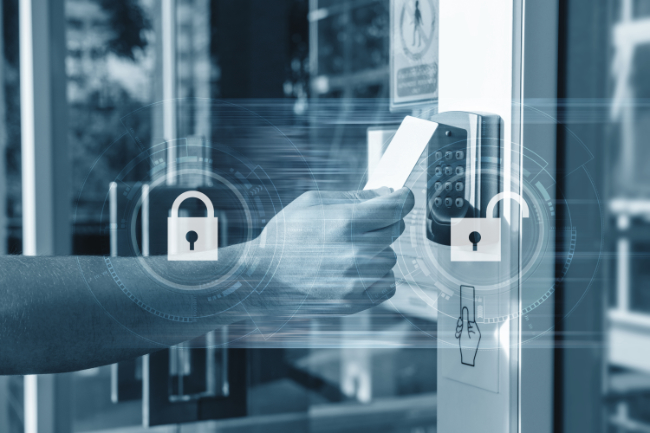
Emerging Campus Access Control Solutions
- By Tyler Webb
- May 08, 2024
Emerging solutions in campus access control can mean different things. Usually, we expect the topic to focus on the very latest in door security products and solutions that have just been recently released or are about to be launched. After all, staying up on improvements to keep campuses safer is critical. Plus, it’s always interesting and exciting to learn what’s new and how innovations are going to better protect lives and assets and help the industry be even more successful.
Digital access ramps up in residence halls, academic buildings, and campus workspaces
Some exciting new developments on the digital access solutions front will likely be a perfect fit for higher education settings. Biometrics readers for facial recognition that allow doors to unlock from a distance and a fresh approach to IP intercoms with voice and video capabilities are two of them. I’ll share more on those and other innovations below. First, here’s another way to look at emerging campus access control solutions.
The term also applies to the trend toward wider adoption of digital access innovations that have already been on the market a few years. The migration to mobile credentials is a prime example, which has notably been picking up steam in higher education. No surprise, really, since students make up most of the demographic that depends on mobile phones for practically every transaction.
Mobile transactions simply make life easier for them, from campus food service, textbook, and vending purchases to contactless access to campus fitness centers, laundry facilities, residence hall suites, and events. Plus, it’s rare for them to lose, forget, or loan out a mobile phone, which means there’s far less need to re-issue credentials compared to misplaced or stolen cards and badges. Issuing and managing mobile credentials is also simpler for security personnel and can be done remotely.
As budgets, planning, and protocols become approved, more colleges and universities are meeting student demand for mobile access and making it part of new construction projects and retrofits. Installations usually occur during summer months over a few years, depending on the size of the campus and deployment. Rollouts and onboarding are typically seamless with locks and readers that can accept both card/badge and mobile credentials during a transition when necessary.
Electronic access control (EAC) solutions for classrooms and labs are also becoming more common, allowing professors and staff to control unlock/lock functionality with a tap of a keycard or pass of a mobile credential. Many readers can also be configured to feature a duress/emergency button on the inside face of the reader that can be activated to alert campus police and first responders in the event of a threat and an immediate lockdown is necessary.
Smart Lockers on the Rise
Mobile-friendly smart package lockers, rooms, and refrigerators are also quickly becoming popular on campuses today and provide a variety of convenient applications including secure package pickup, book and computer exchanges, short term storage of larger items, and refrigerated units for food deliveries. They’re popping up everywhere these days it seems – in residence halls, mailrooms, libraries, workspaces and other key spots around universities and colleges.
Biometrics, Video Intercoms, and More
Among some of the most exciting digital access solutions beginning to arrive on campus are biometrics readers with facial recognition that provide a new non-contact way to unlock doors from a distance. Imagine walking up to a biometric reader at a residence or academic hall with your arms full and having the building immediately recognize your face to open the door and welcome you in. This is also ideal for student athletes who need to access various areas of athletic facilities but cannot carry their student ID or phone with them.
UHF readers for identifying RFID parking tags to activate lot entrance and exit gates around universities are also much more widely available to provide long-range reading capabilities. Like other digital access solutions, biometrics and UHF readers can generate an audit trail to track the access activity of authorized students and personnel to further protect safety.
Not everyone on campus, of course, is a student or employee in possession of access control credentials. That’s where new voice and video intercom solutions are now entering the picture at student housing and other university buildings. They’re particularly helpful for granting access to delivery people, contractors, and guests.
With a door station video intercom outside a space, a visitor can walk up to the intercom camera, use the keypad to contact the student or staff member inside, have a two-way conversation, and be seen on the indoor screen to confirm their identity. Once recognized, the intercom’s unlock function can be used to let the visitor in. If someone’s away from the interior display, they can use the system’s phone app to see and communicate with the person and grant access remotely.
The more progress in door security and digital access solutions for higher education, the more campus buildings are getting smarter, and the more college and university environments are becoming increasingly safer, secure, and convenient.
This article originally appeared in the May / June 2024 issue of Campus Security Today.